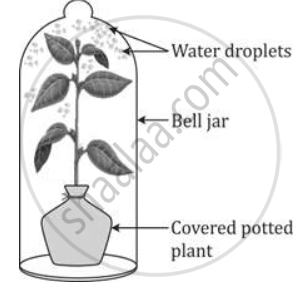Advertisements
Advertisements
प्रश्न
The radio labelled carbon in carbon dioxide supplied to potato plants in an experiment was seen in the tuber eventually. Trace the movement of the labelled carbon dioxide.
उत्तर
To observe the following movement of starch and the creation of carbohydrates from various parts of the plant to the others, the radiolabeled carbon dioxide is supplied. Leaves perform photosynthesis; the radioactive carbon dioxide is received by the leaves.
Following the photosynthesis process, carbohydrates in the leaves are the radioactive carbon. The presence of starch which is the by-product of photosynthesis is also proved. The carbohydrates transform into starch and are moved to the other organs to store. Hence, in the tubers, there are radioactive carbons, such as starch present in tubers.
Leaves →Phloem in veins→ Phloem in stem→ Tuber
APPEARS IN
संबंधित प्रश्न
Which of the following helps in the upward movement of water and dissolved minerals from the roots to the leaves through the stem?
Under what conditions do plant transpire more quickly?
Differentiate between osmosis and transpiration.
An apparatus as shown below was set up to investigate a physiological process in plants. The setup was kept in sunlight for two hours. Droplets of water were then seen inside the bell jar. Answer the questions that follow:

Name the process being studied.
Mention, if the following statement is True or False. If false rewrite the wrong statement in its correct form:
Moist cobalt chloride paper is blue in colour.
Complete the following by choosing the proper option.
Stomata : Transpiration :: Hydathode : ____________.
Describe briefly the three physical properties of water which helps in ascent of water in xylem.
How can plants be grown under limited water supply without compromising on metabolic activities?
Briefly describe the following:
Angina Pectoris
(a) State whether the following statement are True or False.
(b) Rewrite the false statement in the correct form by changing either the first or the last word only.
Transpiration helps to cool the body of the plant.
